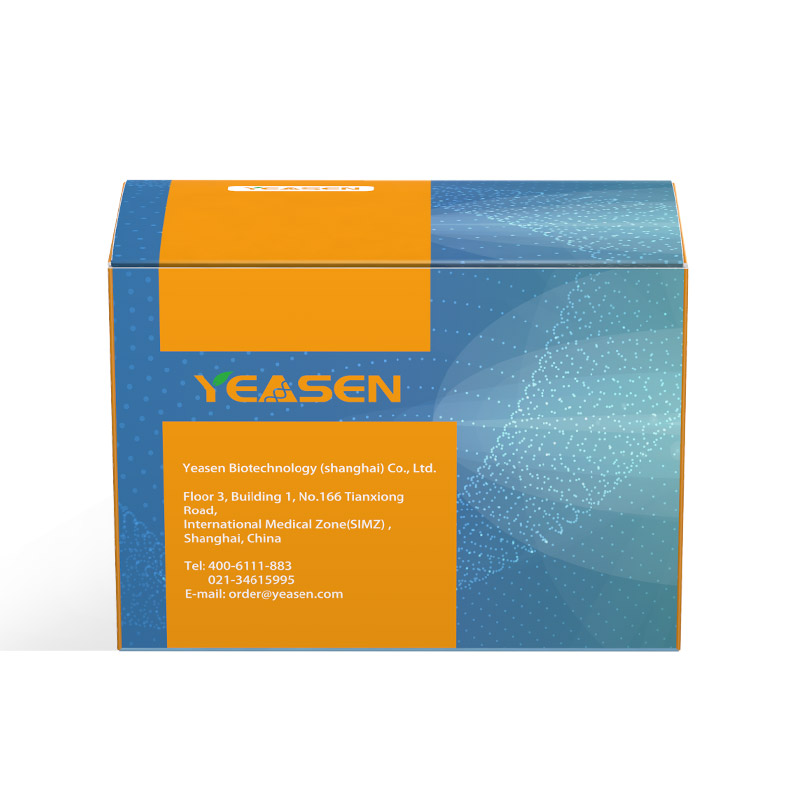Vero Host Cell DNA Residue Detection Kit (2G)
Product description
Vero Host Cell DNA Residue Detection Kit is used for the quantitative analysis of Vero host cell DNA residuce in intermediate samples, semi-finished and finished products of various biological products.
This kit adopts Taqman fluorescent probe and the polymerase chain reaction (PCR) method, which has fg level minimum detection limit and can specifically and quickly detect the residual Vero cell DNA. The kit needs to be used together with the the Residual DNA Sample Preparation Kit (Cat# 18466ES).
Specifications
|
Cat.No. |
41307ES50-EN / 41307ES60-EN |
|
Size |
50 T-EN / 100 T-EN |
Components
|
Components No. |
Name |
41307ES50-EN |
41307ES60-EN |
|
41307-A |
Vero qPCR Mix |
0.75 mL |
1.5 mL |
|
41307-B |
Vero Primer&Probe Mix |
200 μL |
400 μL |
|
41307-C |
DNA Dilution Buffer |
2×1.8 mL |
4×1.8 mL |
|
41307-D |
Vero DNA Control(30 ng/μL) |
25 μL |
50 μL |
|
41307-E |
IC* |
50 μL |
100 μL |
*IC:Internal control.
Storage
This product should be stored at -25~-15℃ for 2 years.
Both 41307-A and 41307-B should be stored protected from light.
Applicable instrument models
Include but not limited to:
Bio-Rad: CFX96 Optic Module.
Thermo Scientific: ABI 7500; ABI Quant Studio 5.
Instructions
Analysis of qPCR results
1) The system will automatically give the Threshold In the Amplification Plot panel of Analysis. The Threshold given by the system is too close to the baseline sometimes, resulting in a large difference in Ct between replicate wells. You can manually adjust the Threshold to an appropriate position and click Analyze. Then you can initially check whether the amplification curve is normal in Multicomponent Plot.
2) In the Result Analysis tab, review the Standard Curve plot. Verify the values for the R2, Efficiency, Slope and Y-intercept. For a normal standard curve, R²>0.99, 90%≤Eff%≤110%, -3.6≤Slope≤-3.1.
3) In the ‘View well table’ pane in Analysis, the concentrations of each samples are showed in Quantity, the unit is fg/μL, the units can be convert in the assay report.
4) The parameter settings of the result analysis need to be based on the specific model and the software version used, and can generally be automatically interpreted by the instrument.
5) Calculate the spike recovery rate based on the test results of the sample TS to be measured and the sample spike recovery ERC, the recovery rate of spikes is required to be between 50%~150%.Spiked recovery rate meter formula: Recovery (%) = {Sample spiked assay (eg.pg/μL) - Sample assay (eg.pg/μL)} x Elution volume (μL) / Theoretical value of DNA addition amount (eg.pg) x 100%。
6) The Ct value of the negative control NCS should be greater than the mean of the lowest concentration Ct of the standard.
7)Template free control NTC should be Undetermined or Ct value ≥35.
8)The Ct-IC value of the sample to be tested should be consistent with or ±1 to the Ct-IC value of the NTC, and if the Ct-IC value of the sample to be tested is significantly larger compared to the Ct-IC value of the NTC, it indicates that the sample may be significantly inhibited. If spiked samples are tested at the same time, the sample spiked recovery results are prioritized and the IC results are used as a reference.
Notes
1. This product is for research use only.
2. Please operate with lab coats and disposable gloves, for your safety.
3.Please read this manual carefully before using this reagent, and the experiment should be standardized, including sample handling, reaction system preparation and sample addition.
4.Ensure that each component is fully vortexized and centrifuged at low speed before use.
Ver.EN20231015
Catalog No.:*
Name*
phone Number:*
Lot:*
Email*
Country:*
Company/Institute:*

